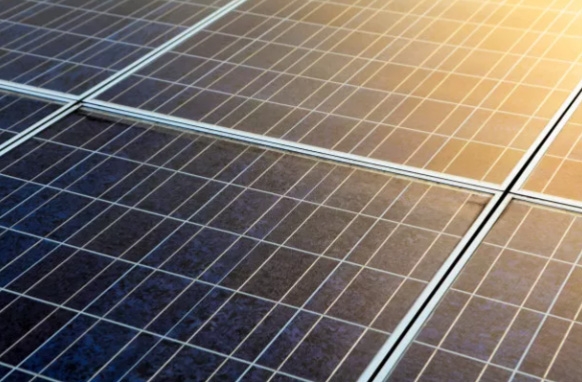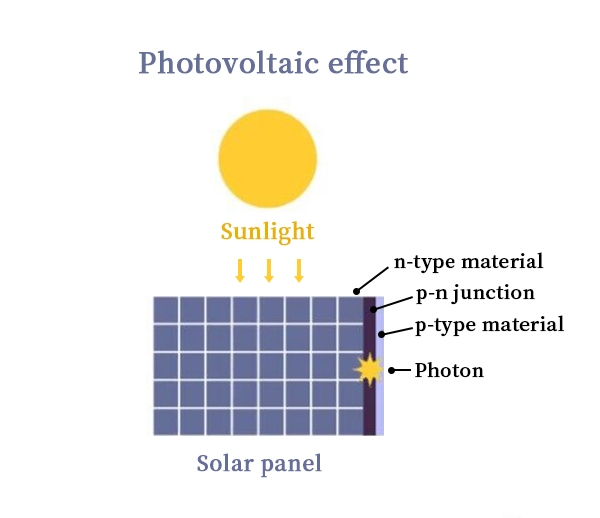In the contemporary world, where concerns about environmental sustainability and energy security loom large, the role of solar cells has become increasingly significant. Solar cells, also known as photovoltaic cells, harness sunlight and convert it into electricity, providing a clean and renewable energy source. In this article, we will introduce the important of solar cell in our life.
What is Solar Cell?
A solar cell, also known as a photovoltaic cell, is a device that converts sunlight into electrical energy through the photovoltaic effect. This process involves the generation of an electric current when certain materials are exposed to sunlight. Solar cells are fundamental components of solar panels, which are widely used to harness solar energy for various applications, including electricity generation.
The basic building block of a solar cell is the semiconductor material. Semiconductors have the unique property of being able to absorb photons, which are particles of light, and release electrons. Silicon is the most commonly used semiconductor material in solar cells due to its abundance and favorable electrical properties. This also allows solar panels to last longer.

The key mechanism behind solar cell operation is the photovoltaic effect. When photons from sunlight strike the surface of a solar cell, they transfer their energy to electrons in the semiconductor material. This energy excites the electrons, causing them to break free from their atomic bonds and create an electric current. The movement of these electrons constitutes an electric current that can be harnessed for various purposes.
Solar cells are classified into several types based on their materials and structures. The most common type is the crystalline silicon solar cell, which comes in two forms: monocrystalline and polycrystalline. Monocrystalline cells are made from a single crystal structure, offering higher efficiency, while polycrystalline cells are composed of multiple crystal structures, making them less efficient but more cost-effective.
Another type is thin-film solar cells, which use thin layers of semiconductor material to absorb sunlight. Thin-film technologies, such as amorphous silicon, cadmium telluride, and copper indium gallium selenide, are more flexible and lightweight than crystalline silicon cells, making them suitable for specific applications. Organic solar cells, based on organic (carbon-containing) materials, represent a newer and emerging technology. These cells are flexible, lightweight, and have the potential for low-cost manufacturing. While their efficiency is currently lower than traditional solar cells, ongoing research aims to improve their performance.
Solar cells are typically interconnected to form portable solar panels or modules. These panels can be integrated into various systems, such as residential and commercial rooftop installations, solar farms, and portable devices. The generated electricity can be used directly, stored in batteries for later use, or fed into the electrical grid. The efficiency of solar cells has improved over the years, driven by advancements in materials science, manufacturing processes, and research. However, challenges remain, including the cost of production, energy storage, and intermittency issues associated with solar power.
Why Do Solar Cells Only Produce DC Electricity?
When photons from sunlight strike the semiconductor material, they transfer their energy to electrons in the atoms of the material, causing these electrons to become excited and break free from their usual positions. This creates electron-hole pairs, where the freed electrons and the resulting positive "holes" move in opposite directions.

To harness the generated electrical energy, the solar cell incorporates a built-in electric field. This field drives the separated electrons and holes towards the opposite sides of the cell. The semiconductor material is deliberately doped to create a p-n junction, forming a one-way path for the movement of charge carriers. Electrons move through the cell and create an electric current.
The nature of the p-n junction and the internal electric field inherently result in the production of direct current. This is because the electric field only allows electrons to flow in one direction, from the n-type (negatively charged) side to the p-type (positively charged) side. The resulting flow of electrons constitutes a unidirectional current, which is the characteristic of direct current.
While solar cells generate DC electricity, many applications and devices in our daily lives use alternating current (AC). Therefore, inverters are commonly employed in solar power systems to convert the DC electricity produced by solar cells into AC, making it compatible with the electrical grid and various appliances.
As we navigate the challenges of a rapidly changing world, embracing and expanding the use of solar cells is not merely an option but a necessity. The transition to a solar-powered future is a key element in building a more sustainable and resilient world for current and future generations.
